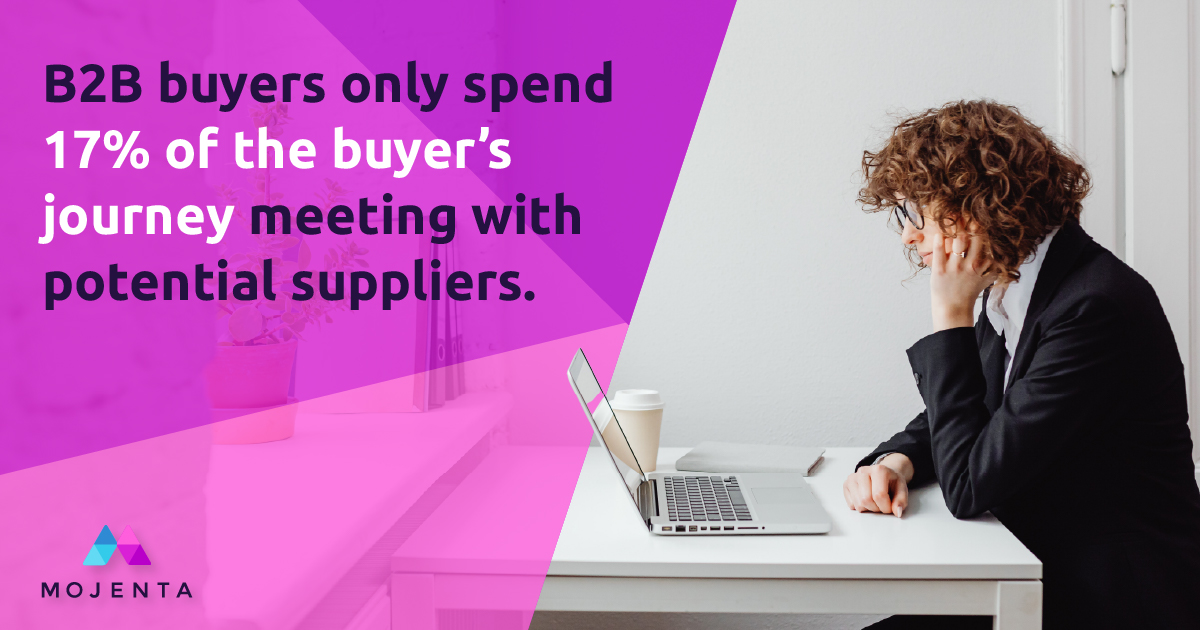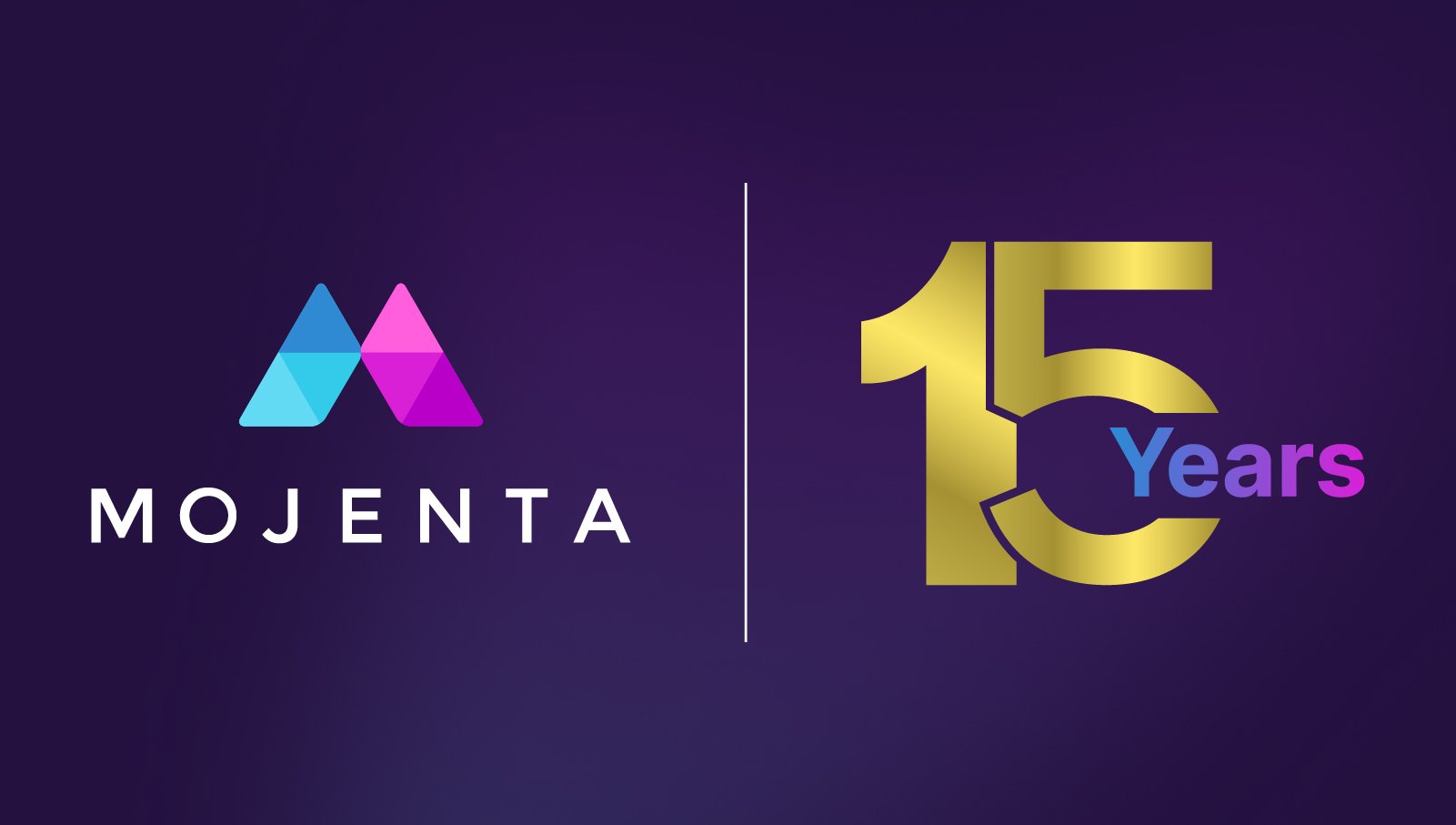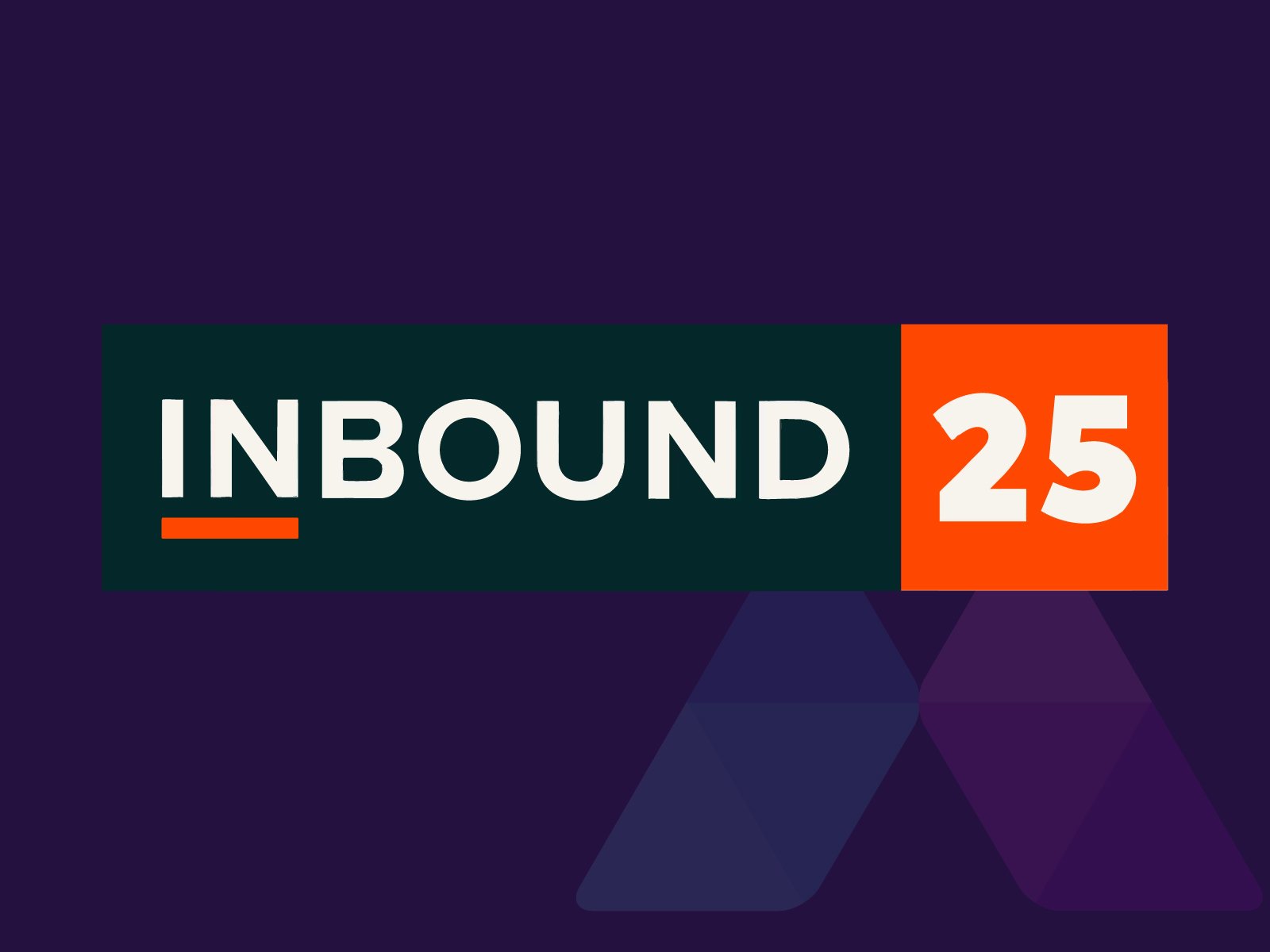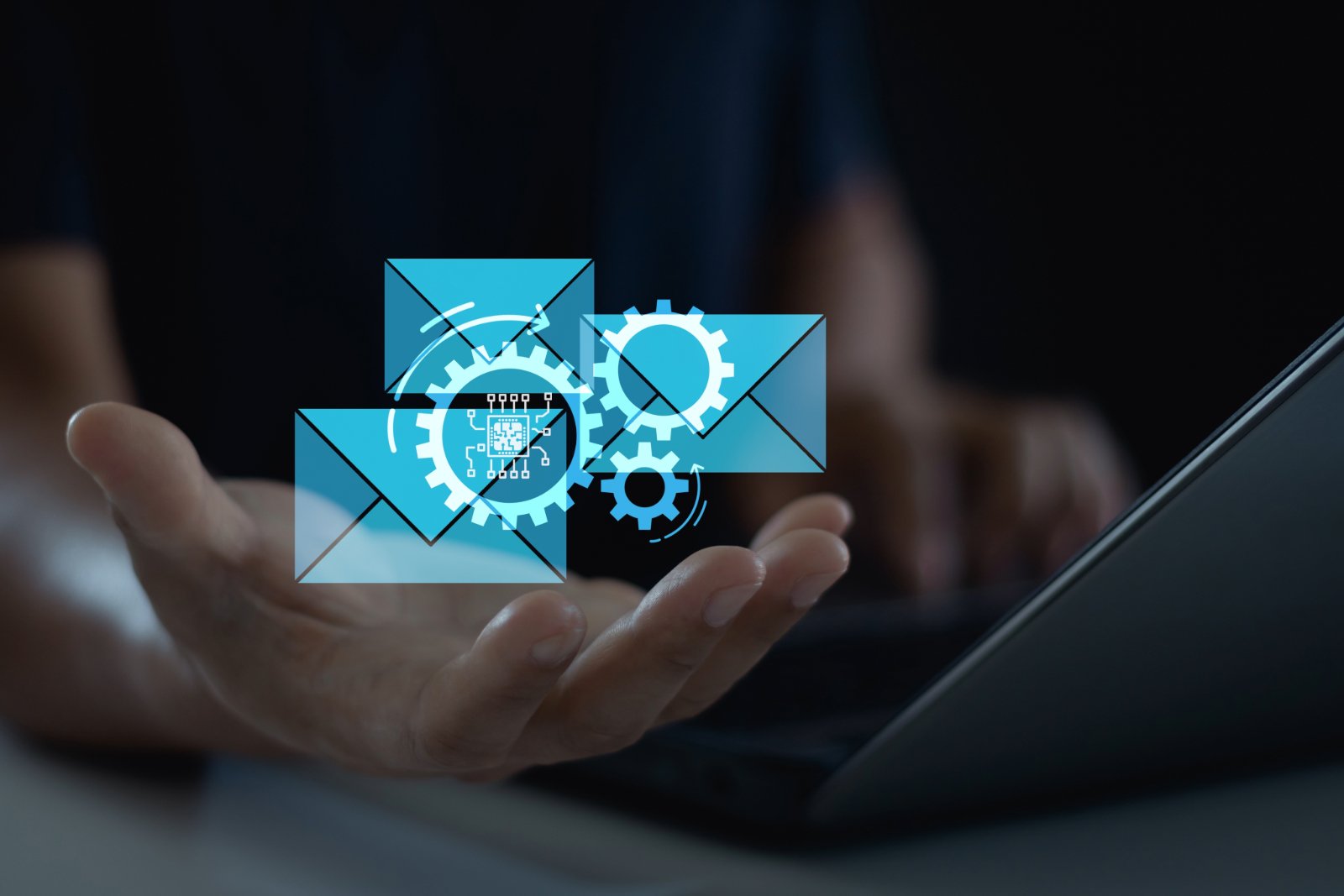B2B buyer behavior is changing fast – and many companies in the B2B tech space aren’t keeping up. That means you’re in a prime position to get ahead of the game when it comes to meeting your prospects where they want to be simply by understanding buyer behaviors and adapting your marketing strategies.
Read on to learn about the top B2B buyer behavior trends to keep in mind when updating your inbound marketing strategy for 2023 and beyond.
B2B Buyers Are Embracing Self-Education
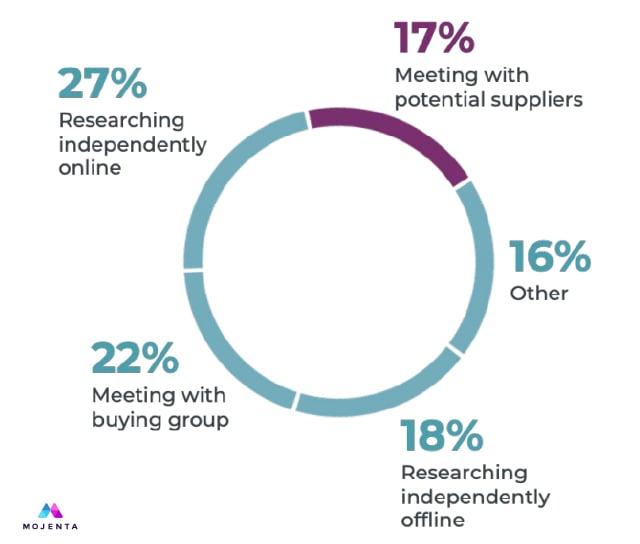
Around 73% of B2B purchasing decisions involve millennial buyers,1 but what does that mean for your business? Since millennials are digital natives, they’re increasingly taking charge of the buyer’s journey by researching options online. They don’t want to talk to salespeople if they can help it; instead, they rely on websites, blogs, and social media to gather information and make informed choices.
The old days of meeting with potential suppliers to learn more about a product or service have all but disappeared. Today, B2B buyers spend only 17% of the buyer journey meeting with vendors.2 If they meet with multiple businesses, they divide that 17% – so in reality, you’re only getting around 5% of their time (if we’re being generous) to make your sales pitch.
The other 83% of the average B2B buyer’s decision-making process primarily involves self-education. The majority of time is spent researching independently, both online (27%) and offline (18%), so your marketing content needs to shine. Providing helpful resources to engage potential customers at various stages of the buyer journey is a must because that’s where modern buyers are going to learn the most about your offerings.
The Buying Process Is No Longer Linear
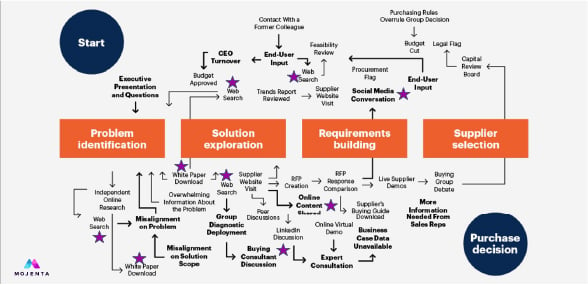
Traditionally, the buying process was a linear progression from building your brand to generating a lead to making a sale. But it’s a lot more complicated than that today, which is likely why 77% of B2B buyers say their last purchase was very difficult.2 A lot of this has to do with:
- More access to information. As we mentioned previously, today’s B2B buyers conduct most of their research independently. Easy access to information online allows buyers to jump between stages of the buyer’s journey faster or revisit previous stages at their leisure.
- Multiple decision-makers. B2B purchases often involve decision-makers from multiple departments or teams, each with unique needs and priorities they want to be addressed during the process.
- Non-linear touchpoints. Digital touchpoints, such as websites, social media, emails, and more, allow buyers to interact with businesses at different stages of the buying process, leading to non-linear engagement.
In the graphic above, we included a purple star next to the parts of the buyer’s journey that are typically considered marketing activities. As you can see, marketing content is no longer just a touchpoint before passing a lead to your sales team. Marketing and sales are now intricately connected, so you should update your selling process to integrate value-added resources that meet your buyers where they are in their journey.
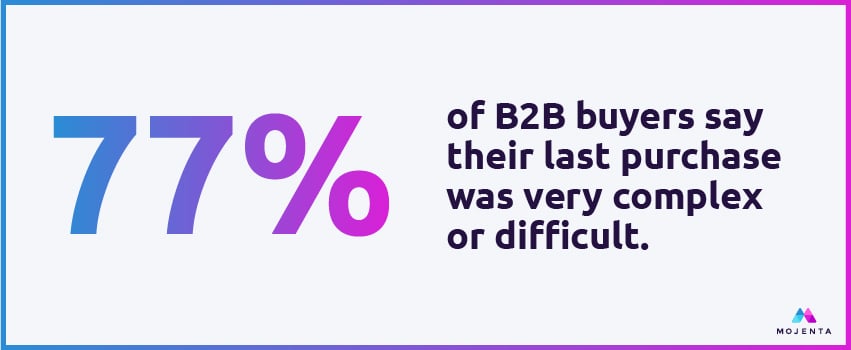
A Digital-First Approach to Self-Service Is Key
Virtually 100% of buyers want to self-serve all or part of the buyer journey.3 B2B buyers don’t just want to self-educate during the decision-making process – they want to experience your offerings on their own terms as well. What does this look like in practice? It means making interactive options like free trials or demos available 24/7, so potential customers can explore what you have to offer at their own pace.
If you think what you’re selling is too complex or expensive for anyone to purchase without speaking to a rep, think again. 71% of people say they’re willing to spend up to $50,000 on a product or service offered through a self-service model, and 27% are willing to spend $500,000 or more.4 Essentially, your customers want to make purchases themselves. They’ll let you know when they need your help.
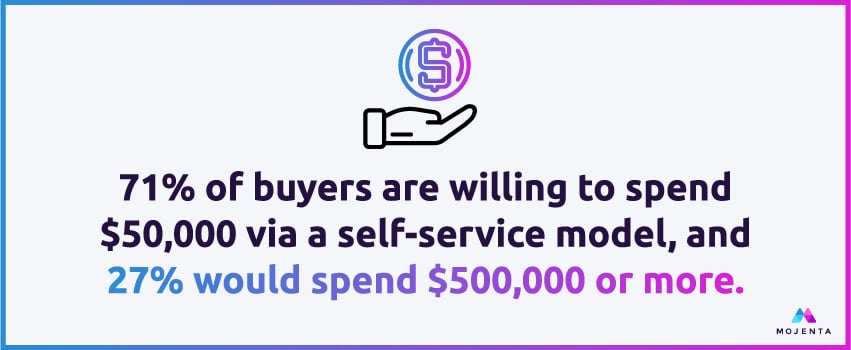
If you’re having trouble perfecting your inbound marketing strategy for B2B buyers, you’re not alone. At Mojenta, we specialize in creating holistic, data-driven growth engines that help B2B tech businesses attract right-fit customers and partners.
We’ve helped nearly 300 telecom, IT, and cloud brands achieve their growth goals – and we’re here to help you, too.
Book a consult with our marketing experts today to get started.
Sources:
- https://www.forrester.com/report/millennial-b2b-buyers-come-of-age/RES132706
- https://www.gartner.com/en/sales/insights/b2b-buying-journey
- https://www.trustradius.com/resources/assets/2022-b2b-disconnect
- https://www.mckinsey.com/capabilities/growth-marketing-and-sales/our-insights/the-future-of-b2b-sales-is-hybrid
